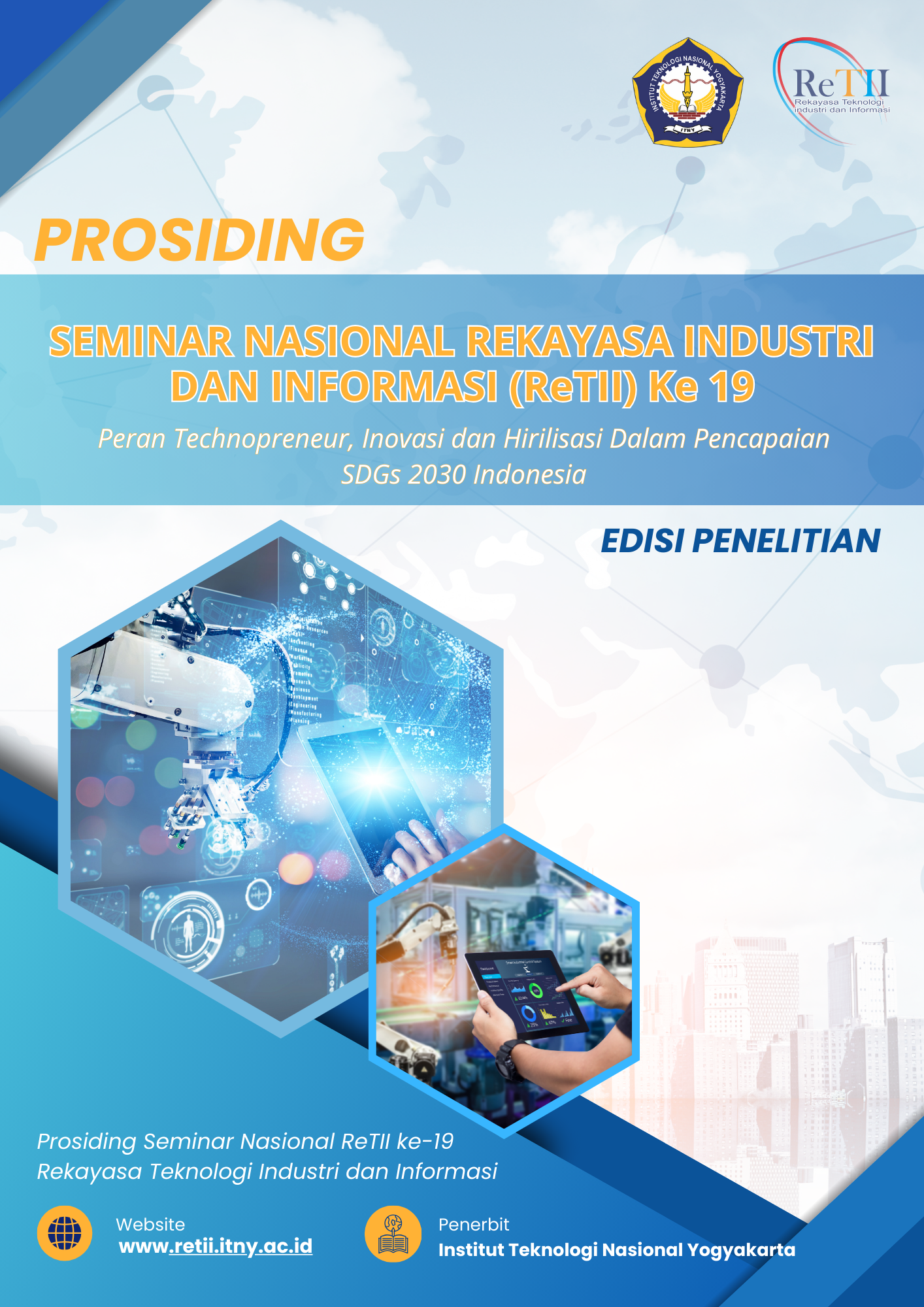Pengaruh variasi milling terhadap strukturmikro dan kekerasan paduan serbuk Fe-C dengan metode mechanical alloying
Keywords:
mechanical alloying, durasi milling, struktur mikro, paduan serbuk Fe-CAbstract
This study aims to investigate the effect of varying milling durations (4 hours, 8 hours, and 12 hours) on the microstructure and hardness of Fe-C alloy powders processed using the mechanical alloying method. The mechanical alloying process involves high-energy milling to produce a homogeneous mixture with fine grain size. The variation in milling duration is expected to influence microstructural changes, such as grain size, phase distribution, and the formation of metastable phases. Microstructural analysis was conducted using electron microscopy. The results show that longer milling durations lead to finer grain sizes and an increase in martensitic phase formation. At 12 hours of milling, the grain size reached the nanometer scale, contributing to increased hardness (425 HVN) and microstructural homogeneity. Thus, the variation in milling duration significantly impacts the microstructural evolution of Fe-C alloy, with longer milling durations producing finer and more uniform microstructures. This research provides deeper insights into the relationship between milling parameters and the microstructural properties of Fe-C alloy for more optimal applications in engineering materials.
.
References
2. Rochman NT. Mechanical Alloying of Fe-C System Based Alloy. Indones J Phys. 2016;19(3):83–90.
3. Science M, Higashi-ku H, January R. Microstructures of Fe-C System Hard Alloys Produced Mechanically Alloyed Powders from Yuuji Kimura , Setsuo Takaki and Hideto Goto Department of Materials Science and Engineering , Faculty of Engineering , Kyushu University , 6-10-1 Hakozaki. 1996;
4. Al-Joubori AA, Suryanarayana C. Synthesis of Fe-C alloys by mechanical alloying. Mater Sci Technol Conf Exhib 2014, MS T 2014. 2014;1(October 2014):509–16.
5. Enayati MH, Zakeri M. Production of Fe-C Powders with Improved Structure. 2004;1(1):24–8.
6. Nowosielski R, Pilarczyk W. The Fe-C alloy obtained by mechanical alloying and sintering. 2006;18(1):167–70.
7. Dewantoro Herlambang Y. Aplikasi Pengolahan Citra Untuk Analisis Strukturmikro Logam Ferro Berdasarkan Pola-Pola Khas Statistiknya. Semin Nas Apl Teknol Inf. 2007;2007(Snati).
8. Kim Y Do, Chung JY, Kim J, Jeon H. Formation of nanocrystalline Fe-Co powders produced by mechanical alloying. Mater Sci Eng A. 2000;291(1):17–21.
9. Nugroho IA, Ramadhana R, Matsuki. Analisa Tekanan Kompaksi Dan Waktu Tahan SinteringPada Paduan Serbuk Besi Dan Serbuk Arang BatokKelapa Dengan Metode Metalurgi Serbuk TerhadapDensitas Dan Nilai Kekerasan. Publ Online Mhs Tek Mesin. 2023;5(2).
10. Setiyana B. Optimalisasi Kekerasan dan Struktur Mikro Baja Karbon Sedang pada Bucket Teeth Excavator Menggunakan Metode Taguchi dan Anova. Rotasi. 2017;19(4):177.
11. Rifnaldi R, Mulianti. Pengaruh Perlakuan Panas Hardening dan Tempering Terhadap Kekerasan (Hardness) Baja AISI 1045. Ranah Res J Multidicsiplinary Res Dev. 2019;1(4):950–9.
Downloads
Published
How to Cite
Issue
Section
License
Prosiding ini memberikan akses terbuka langsung ke isinya dengan prinsip bahwa membuat penelitian tersedia secara gratis untuk publik mendukung pertukaran pengetahuan global yang lebih besar.
Semua artikel yang diterbitkan Open Access akan segera dan secara permanen gratis untuk dibaca dan diunduh semua orang.


